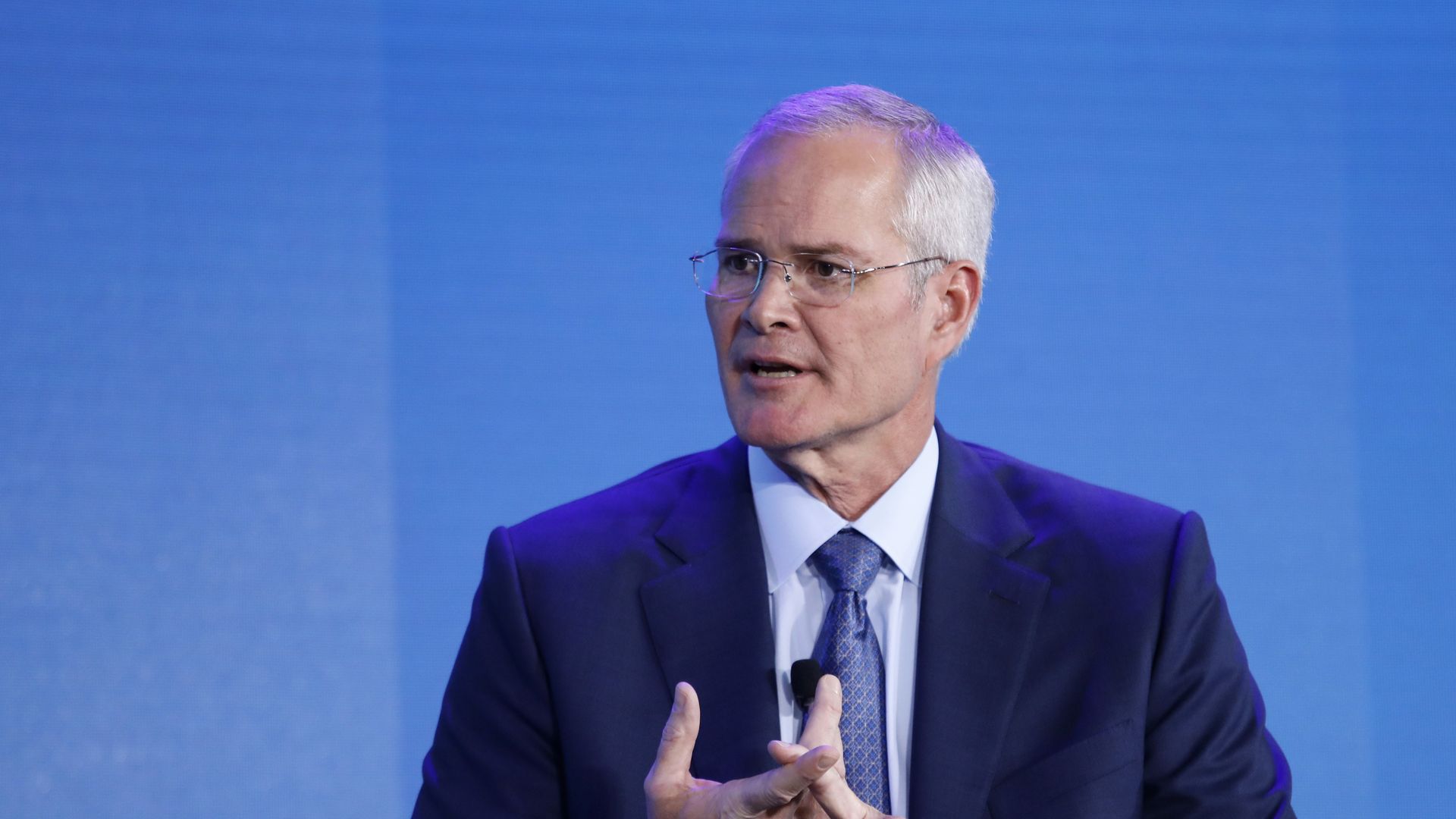| | | | | | | Presented By OurCrowd | | | | Axios Markets | | By Sam Ro ·Jul 06, 2021 | | Today's newsletter is 1,284 words, 4.8 minutes. 📉 of the day: 41 basis points, the cost to S&P 500 investors of dropping Apartment Investment & Management and adding Tesla in the first six months of the index's rebalancing. | | | | | | 1 big thing: Bosses are paying up |  Data: U.S. Department of Labor and Wells Fargo Securities; Chart: Axios Visuals Employers are doing what they have to do to address persistent labor shortages: They're offering more money. Why it matters: The reopening of the U.S. economy is fueling demand for goods and services. But businesses have struggled to meet that demand because current pay rates aren't attracting the qualified applicants that employers want. By the numbers: The June jobs report on Friday showed average hourly earnings were up 0.3% month over month in June. - This continued growth is notable because it comes on top of a 0.4% gain in May and a 0.7% jump in April.
- On an annualized basis, the past three months of gains represent a 5.9% pace of growth, which is substantially higher than the 2.4% average from the last economic cycle, per Wells Fargo.
What they're saying: "Getting workers back to the job site has not come cheap," Wells Fargo senior economist Sarah House writes. "Employers have had to pony up in industries where shortages have been particularly acute." - Lower-wage industries, like leisure, hospitality and retail, which combine to employ 30 million people, reported strong gains.
- Leisure, hospitality and retail accounted for 49% of the 850,000 jobs added in June.
Yes, but: "There is still progress to be made," Indeed Hiring Lab's Nick Bunker writes in an email. "Employment in leisure and hospitality is still 12.9% below its pre-pandemic level." - The 15.1% pace in leisure and hospitality "reflects the mismatch between demand and supply, which should be resolved over time, leaving wage growth to cool in this sector," says BofA head of U.S. economics' Michelle Meyer. "We would therefore squarely put this in the 'transitory' camp."
All major industries are pacing above 3% — even higher-wage areas like information, financial, professional and business services. - Morgan Stanley economist Robert Roesner notes that higher-wage industries have also struggled with record job openings and unusually high quit rates.
- "The wage data is starting to show a transition from more idiosyncratic pressures to more broadly based and potentially more persistent pressures," Roesner writes.
The bottom line: Businesses need to be able to sell stuff, but they can't do it without workers. And as long as demand is outstripping supply, workers will continue to have leverage to ask for more money. |     | | | | | | 2. Catch up quick | | Up to 1,500 businesses have been affected by a ransomware attack on IT firm Kaseya. (Reuters) Chinese ride-hailing app Didi was forced off of app stores in China, sending shares lower by more than 20% just days after its U.S. IPO. (Reuters) OPEC+ talks were postponed indefinitely with no production deal, sending oil prices higher. (CNBC) |     | | | | | | 3. Exactly what the markets wanted |  | | | Illustration: Annelise Capossela/Axios | | | | The June jobs report was strong, but not so strong that it stoked fears that the Federal Reserve would scale back on its supportive monetary policies sooner than expected. - This sentiment was reflected in the stock market, where the S&P 500 closed at a record high after the news.
Why it matters: The U.S. economy continues to recover as hundreds of thousands of Americans return to work. - However, signs of an overheating economy — in which the unemployment rate is plunging and wages are surging — would force the Fed to be more hawkish and pull its support from the financial markets.
By the numbers: U.S. employers added 850,000 jobs in June, which was better than expected. - Average hourly earnings were up a robust 3.6% from a year ago.
Yes, but: The unemployment rate climbed to 5.9% from 5.8% in May. - This was largely because of 151,000 Americans entering the labor force during the month.
"I expect no changes out of Fed policy from this report," Federated Hermes' chief equity strategist Phil Orlando tells Axios. The bottom line: We will continue to see anecdotes and intermittent reports of jumps in jobs and pay. But employment continues to be 6.7 million jobs short of pre-pandemic levels. - And as long as those folks continue to reenter the labor force, the Fed will continue to support markets with loose monetary policy.
|     | | | | | | A message from OurCrowd | | Meet the AI tech deployed by the world's largest food service company | | |  | | | | Invest in the tech transforming customer experience — at OurCrowd. Zippin combines advanced AI, computer vision and a sophisticated sensor system to enable contactless payments for the world's leading retailers. Explore Zippin's investment potential at OurCrowd. | | | | | | 4. The job market's retirement wildcard |  Data: Federal Reserve Bank of Dallas; Chart: Sara Wise/Axios As experts attempt to explain why businesses are struggling to hire, some have made the case that the pandemic encouraged older working Americans to retire earlier than expected. Why it matters: If it's true that retirements are unusually high, then the labor market may have less slack than many assume. - However, it's not too unusual for people to retire only to eventually return to work again.
By the numbers: The percentage of the U.S. population in retirement has been increasing modestly for years, but jumped from 18.5% in February 2020 to 19.6% in May 2021. This is an increase of about 2.9 million people during the period. - In a study first conducted by the Dallas Fed in May, and updated in July for Axios, just 1.2 million would have retired assuming a continuation of 2019 retirement rates.
- This means an extra 1.7 million retired earlier than expected.
- This trend is confirmed by the labor force participation rate, which remains depressed at 38.4% for those age 55 and over. This is down from 40%+ levels before the pandemic.
What they're saying: "Early-retirement decisions during the pandemic, boosted by well-cushioned 401(k) accounts, have partly dampened the supply of older workers," wrote Oxford Economics lead U.S. economist Lydia Boussour. - "The virus' significant health risks for the most senior workers and their lower ability to telework led many to opt out of the workforce."
Yes, but: "I am convinced that at least some of the retirement population is more transitory in nature, especially given that some are relatively young," Invesco chief global market strategist Kristina Hooper tells Axios. - Retirees could come back as wages increase and COVID risk subsides — and as retirement savings dries up, Hooper says.
The bottom line: "People's decisions to work is affected by a wide array of factors, and even if some constraints are removed it'll take some time before the post-COVID normal resembles the pre-COVID normal," Oxford Economics' chief U.S. economist Greg Daco tells Axios. |     | | | | | | 5. Exxon had a week |  | | | Exxon CEO Darren Woods. Photo: Justin Chin/Getty Images | | | | When a corporate lobbyist's unfiltered private comments are caught on tape, it's usually not a great look for anyone involved. What happened to Exxon last week was no exception to that rule, Axios' Kate Marino writes. What happened: A video released June 30 captured an Exxon government affairs official comparing lobbying to catching lawmakers like fish, and saying the company's support for a carbon tax is largely for show. Why it matters: Exxon's stock was resilient amid general strength in both U.S. equities and oil prices. But concern over fallout has penetrated the highest levels of the company, considering CEO Darren Woods made two separate public statements on the matter in the span of three days. - The timing of the video release comes as the oil majors are under increasing pressure — from shareholders, the public and governments — to address climate change in their business models.
The video was made under false pretenses by a Greenpeace activist posing as a corporate recruiter. - Go deeper into the comments by the lobbyist, Keith McCoy, courtesy of Axios Generate authors Ben Geman and Andrew Freedman.
What to watch: Environmental activists and progressive lawmakers are using news of McCoy's remarks about Exxon's influence strategy to call on Washington for more aggressive climate measures. State of play: Woods disavowed McCoy's comments altogether. He insisted the company aims to be part of climate solutions, in a response on Wednesday and then in another statement Friday. - Exxon is fresh off a stinging loss in a proxy battle in late May, in which shareholder Engine No. 1 won support for three new board members who are expected to push the company to be more proactive on climate change-related actions.
The bottom line: Woods and Exxon already faced skepticism about the company's seriousness on climate issues. Last week's revelations won't help. |     | | | | | | A message from OurCrowd | | Meet the AI tech deployed by the world's largest food service company | | |  | | | | Combining advanced AI, computer vision and a sophisticated sensor system, Zippin helps optimize the checkout experience for consumers and retailers. Billion dollar retailers have deployed this tech. Now, you can invest. Zippin is transforming the trillion dollar retail industry. | | |  | | It'll help you deliver employee communications more effectively. | | | | | | Axios thanks our partners for supporting our newsletters. If you're interested in advertising, learn more here.
Sponsorship has no influence on editorial content. Axios, 3100 Clarendon Blvd, Suite 1300, Arlington VA 22201 | | | You received this email because you signed up for newsletters from Axios.
Change your preferences or unsubscribe here. | | | Was this email forwarded to you?
Sign up now to get Axios in your inbox. | | | | Follow Axios on social media:    | | | | | |









No comments:
Post a Comment